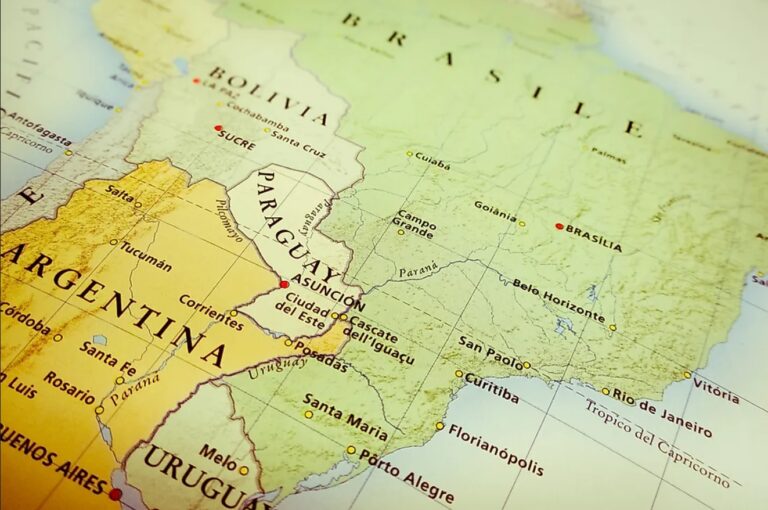If one were to believe the mainstream media, in response to intensifying US-China rivalry, Southeast Asia is in the midst of a frantic arms race. Rest assured, it is not.
Academics define an arms race as a dynamic in which two or more countries perceive each other to be a clear and present danger, ramp up defence spending as a percentage of gross domestic product (GDP), and try to match each other’s military capabilities weapon for weapon.
Historical examples include the Anglo-German naval rivalry prior to World War I and the nuclear arms race during the Cold War. Thankfully, however, this dynamic is absent from Southeast Asia today.
To be sure, most Southeast Asian countries are modernising their armed forces. But defence modernisation is a complex phenomenon involving a host of drivers and enablers. One of the most important drivers is recapitalisation. After a few decades, old, obsolete and worn out fighter aircraft, tanks, and warships need to be replaced with new equipment.
Another factor is changes in doctrine, for instance, a shift away from internal to external defence (the former places an emphasis on armies, the latter on navies and air forces, both of which require more costly weapons). The Philippines, for instance, is shifting away from counter-insurgency operations to protecting its maritime interests in the South China Sea.
Another driver of defence modernisation is threat assessments. What are the threats (real or perceived) facing the country, and how should we prepare to meet them? For some countries, the threat is clear. Vietnam, for example, views China’s expansionist activities in the maritime domain as a threat to its territorial and jurisdictional claims in the South China Sea. Since the early 1990s, it has been equipping its armed forces with fighter jets and submarines to deter China.
Defence planners also make capabilities-based assessments, a process that sometimes fosters a “keeping up with the neighbours” mentality. A prime example of this is Thailand, which in 2017 ordered three submarines from China (although the delivery has been delayed due to the export embargo of the engines) simply because nearly all of its neighbours have submarines (including Malaysia, Vietnam, Indonesia, Singapore, and even Myanmar).
Corruption is another factor. Major arms purchases come with hefty price tags and provide venal politicians with opportunities to skim off a percentage of the deal and pocket millions. Corruption often leads to substandard equipment, inflated contracts, and unnecessary purchases.
At the end of the day, the top brass’ wish lists are subject to budgetary restrictions. Even when economies are booming, governments have only finite financial resources and competing priorities – the old “guns versus butter” conundrum. Should money be spent on fighter planes and tanks, or schools and hospitals?
Although Southeast Asia is a region of 650 million people, and home to some of the fastest growing economies in the world, defence budgets are relatively modest, compared to other regions such as Northeast Asia, the Middle East, and Europe. Most countries’ defence outlays account for around 2-3% of GDP – hardly the spending habits of a region undergoing an “arms race”.
According to the Swedish think tank Stockholm International Peace Research Institute (SIPRI), in 2021, the countries of Southeast Asia collectively spent US$43 billion on defence, only 2% of global defence spending (Northeast Asia spent US$411 billion or 19% of the world’s total, Europe US$418 billion or 20%, and America US$827 billion or 39%).
Will Russia’s invasion of Ukraine lead Southeast Asian countries to increase defence spending? As the conflict is geographically far removed from the region, probably not. But defence ministries across the region will no doubt have been watching the Russia-Ukraine conflict with keen interest and making their own conclusions.
However, drawing lessons from the Russia-Ukraine war is problematic, for two reasons. First, it isn’t over yet, and may still hold surprises. Second, while the combatants have deployed new military technologies, many of the battlefield engagements have been reminiscent of wars in the early and mid-twentieth centuries: the trench warfare of World War I, and the use of heavy armour and artillery in World War II.
Nevertheless, one of the most important takeaways of the conflict is that large-scale conventional wars have not been consigned to history. It has also demonstrated that diplomacy doesn’t always succeed, and that irrational decisions can lead to full-blown conflict.
This should concern the Southeast Asian claimants in the South China Sea. Regional governments should also worry about the prospects of a conflict in the Taiwan Straits, which would be right on Southeast Asia’s doorstep and could drag in one or more regional states.
Aside from the wider geopolitical implications of the war, defence planners will be looking closely at what the combatants did right and what they did wrong. Russia’s armed forces have fared badly due to a combination of poor strategic planning, leadership and training, weak logistics, low morale, and endemic corruption.
Conversely, the Ukrainians have done much better than expected thanks to superior planning, leadership, training, Western-supplied arms, and modified Soviet-era equipment. In particular, Southeast Asian military analysts will be looking at Ukraine’s effective use of drones for surveillance, targeting and delivering ordinances, and other forms of fairly inexpensive asymmetric warfare tactics.
Going forward, the war is likely to have an impact on many regional states’ procurement decisions. For the past two decades, Russia has been the largest supplier of arms to Southeast Asia (US$11 billion in sales since 2000, compared to America’s US$8.4 billion). Many regional countries preferred Russian weapons to Western ones because they were cheaper, Moscow was willing to accept part payment in commodities, and sales were not contingent on human rights records.
But even before the war, Russian arms sales to the region had been falling. Vietnam, which is Russia’s number one customer, had paused its military modernisation programme, while the threat of US sanctions had put other countries off buying from Russia (most notably, Indonesia cancelled an order for 11 SU-35 fighter jets, while the Philippines terminated an agreement to buy 16 military helicopters).
The conflict in Ukraine will make matters worse for Russia’s defence industry. Western (and Asian) sanctions and export controls will make it much harder for Russia to finance military deals and obtain advanced technologies critical in the production of modern military hardware.
The war has also been a public relations disaster for Russia’s defence sector due to the high attrition rates suffered by Russia’s armed forces in Ukraine, including the destruction of large numbers of tanks and infantry fighting vehicles, as well as the loss of fighter aircraft, helicopters, and warships.
This has serious implications for Vietnam, as its doctrine, training, and most of its inventory are of Russian origin. This will push Hanoi to accelerate the diversification of its arms imports away from Russia, but this will be costly and time-consuming. The eclipse of Russia’s defence industry in Southeast Asia and across the world will create new opportunities for arms companies in the US, Europe, and Asia.
South Korea may stand to gain the most. In the last five years, it has become the number one arms seller in the region, racking up sales of nearly US$2 billion. Indonesia, the Philippines and Thailand are among its biggest global customers. South Korean equipment is high-tech, affordable, and, unlike the US, China and Russia, fewer geopolitical strings are attached.
This is an adapted version of an article from ASEANFocus Issue 1/2023 published in March 2023. Download the full issue here.
Ian Storey is Senior Fellow at ISEAS – Yusof Ishak Institute
Source: Fulcrum








Leave a Comment